Traildonkey.
We all laughed when the name popped out of my mouth over a morning coffee. I was describing to Chris and Peder that I wanted to build a new cyclocross bike. My 2001 Bianchi Axis, though still a worthy steed, is showing signs of age. It still gets the job done in a standard cyclocross race, but over the last year I’ve been taking the bike places it just wasn’t built to go, and it’s struggled to keep up with my demands. I am, to a fault, loyal to my beat up old warhorse bikes. My stable includes a 2001 Yeti AS-R MTB, the 2001 Bianchi Axis, and my 2007 Felt FA road bike. I recently added the Cannondale SuperSix (which I won), but it is the exception to my miserly bike ownership. When I was a bit younger (and single) I wanted bikes that were the lightest, fastest things out there, but now I’m more pragmatic about the hardware and the true performance gains it affords. Only when I come to the end of what I think one of my bikes can do do I start looking around for a new bike.
This brings me to the Donkey. While trail riding and mountain biking on the Axis, I found both the gearing and the breaking very limiting on the trail. In addition, the seat position could be set for efficient climbing, but that same position sucked for descending. On extended descents the brakes would become overwhelmed and my hands and forearms would fatigue to dangerous levels trying to squeeze the levers ever harder. I would have to stop and wait for muscles and rims to cool before proceeding. On the ups my standard compact + 12-28 gearing were somewhat functional on minor climbs, but not suitable for long steep sustained climbs, which Colorado is full of. There weren’t really many options for upgrading the bike overall. Gearing could be addressed, but I didn’t believe cantilever brakes any longer provided sufficient power for my needs and v-brakes didn’t provide good mud clearance on the race course. For seating position I could add a quick release, but that wasn’t very adjustable on the trails and I didn’t want to stop and fiddle while on the go.
In short, I wanted a more flexible bike with upgraded capabilities. I decided I wanted a new bike that I specced ground-up. I sheepishly proposed the idea to my CFO (my wife), and got tacit approval for the project after assailing her with the Axis’ list of shortcomings. She probably didn’t even listen to my reasoning, instead simply saying yes just to get me to stop bike dorking her. :)
All of this was happening in January, about the exact time that Peder and I were getting Rodeo Labs off of the ground. I was having fun using day job skills on team related stuff (like the kits and website) and the thought popped into my head “If I’m building a new bike, why not make it a Rodeo bike?”.
*large record scratch here*
Wait wait wait. A Rodeo bike? What does that even mean? Good question. To me a Rodeo bike is ANY bike that aligns with what Rodeo is all about, and that is about as complicated as it gets. For me personally a Rodeo bike is a bike that allows me to seek adventure on my own terms, and allows me to play with the formula along the way. Cue broken eggs reference, because a Rodeo bike may even be about making mistakes or doing something that doesn’t work. I’ve been a serious cyclist since I was in junior high school (hint: early ’90s). I’ve purchased many bikes, I’ve raced many bikes, and I’ve broken many bikes (Norco, Manitou, Felt, represent!). I’ve come away with two decades of experience on two wheels, and although I’ve never “made” a bike, I’ve zeroed in on what I want out of a bike and how it should perform. A Rodeo a bike is/was a way for me to explore that. For the record, I think there are already an innumerable number of bikes already being produced that could serve as a platform for a Rodeo bike; the Trail Donkey, but I’m a little bit tired of simply consuming other people’s ideas and brands. I want to do things my own way, for better or for worse. This is why I decided to build Traildonkey from scratch.
Scratch? So I went out and welded my own tubes or created my own carbon fiber autoclave? No. I guess I don’t exactly mean scratch. The basic foundation for any bike is the frame, and as soon as I had the green light to create the Traildonkey, I started looking for a place to source a frame that I could call my own, and on my own budget. Thanks to the wonders of technology, air freight, and geo-economics, that place is China. Yes, Traildonkey 1.0’s frame comes from China. Maybe I should give the reader a few minutes to throw a fit before continuing…
….
Ok, we’re back. Yes I found my frame manufacturer in China. I spent a month or so digging around on the internet, reading nauseatingly long home brew bike forums, and clicking through OEM manufacturer websites before I found the frame that I wanted to use. The frame is made by: Do Your Own Research, LTD, and that’s all I’m going to tell you. What I did discover about it was that the factory creates frames for many global brands, many of which I see on every group ride I go on. The factory and facilities look nicely up to date and are ISO certified, and the frame itself was well reviewed in places where I found it being discussed. This, for me, was enough to roll the dice and order one up. But wait! If I’m going to make a Rodeo bike it has to have Rodeo graphics! That part is half of the fun for me. That was the part where I got to pretend that somewhere earlier in life I had been drafted into the bike industry and had turned into a proficient frame graphics designer. What a fun career that would be! I’m pretty proficient in the world of design in real life, so I put my existing skill set to use and had a lot of fun throwing colors around until I came up with something that I liked. And here is the great part about that: As the sole intended audience for the Rodeo bike, I didn’t have to make something anyone else liked, I could just design for myself for my own sake. That in itself was terrifically liberating and I had a blast. This is what I came up with:
Even though it was just a bunch of pixels in the form of a 3d render, Traildonkey 1.0 was born. I shared it with the internet, and the internet responded kindly. (Those were the days!…)
In addition to designing the graphics, I asked the factory to engineer in an extra set of internal routing ports for a dropper post cable, and they obliged. Even though Traildonkey is based on a stock mold, it tickles me a little bit to know that it’s tweaked ever so slightly enough that nobody else out there can say they have the same frame.
Right before putting in the order for my frame I mentioned the project to a couple of friends, my sister, and a very trusting and friendly Rodeo member in California. All of these people wanted a Trailonkey of their own. I paused for a second, and quickly thought “why not?”. And then there were five Donkeys. Is there such thing as a litter of donkeys? I guess there is now.
Most of the rest of the build was pretty standard. I knew I wanted a flexible gruppo so I stayed away from electronic (difficult to repair or hack). Stem came with frameset and was suitably beefy as to inspire confidence. Handlebar was alloy. I went with mechanical disc brakes for ease of service and Ultregra 10speed brifter compatibility. TRP makes a two piston brake called the Spyre that solves many of the issues that mechanical discs suffer from so I went with that. Seatpost was a generic dropper per price and the fact that the idea was entirely beta and not worth spending big coin on. Cranks came off my SuperSix, and are compact Cannondale units. Seat and bartape arrived courtesy of Specialized, who took notice of my Instagram feed and sent along schwag. Donkey was coming together! The main missing bit of the build was wheels. Having chewed through the majority of my build budget thus far, I started visiting some Taiwanese and Chinese sources I’d discovered during my frame search. One particular OEM was very well regarded and made just the rim specs that I was looking for. I wanted a nice WIDE rim for trail stability, and I wanted a deep rim for overall mass/strength. The Donkey is supposed to be a versatile bike, and I wanted to be able to slice through the air on road rides when required. I ended up sourcing a killer looking rim for the task, and was looking at build specs at exactly the time Rodeo ran into Ride Magnetic.
Magnetic is to wheels what Gandalf is to Middle Earth. When you ask him questions regarding wheels, expect replies that are so full of wheel wisdom that you can’t possibly comprehend them, so why even try. He even tosses in the occasional good natured eye roll, as if to underscore his wheel palmares. The guy is super nice and knows wheel building because he has been building bespoke high end wheels since the same point in the early ’90s that I started riding bikes in the first place. Magnetic had taken an interest in Rodeo (and is indeed now a team partner!), and while we were discussing wheel sponsorship ideas, we told him about the Donkey project and it’s need for wheels. At first he dismissed even the thought of touching carbon from across the pond because of his personal experience with generic unbranded junk coming out of that corner of the world, but we pitched the idea of giving six sets of wheels a shot, and if they didn’t meet his standards, we wouldn’t ask again. We said he could pick the specs of the rest of the wheel builds, and he insisted on top shelf Sapim spokes and monstrously durable HOPE hubs. We put the order in (after I had some fun with the graphics again), and two months later Magnetic delivered to us some of the most lovely wheel eye candy I’ve seen in a long time. Are they ENVE? Not even close! Are they excellent wheels regardless? Damn straight they are. And I’m quite proud of the collaboration. The wheels make a good point about the whole Donkey process: Success is not guaranteed, but by asking questions, foraging ahead, collaborating, and trying things your own way, you can help put together some incredible bike gear that doesn’t just follow in the steps taken by others. Again, we are not inventing anything brand new, but we are having a ton of fun remixing and re imagining cycling on our own terms, and that is very Rodeo.
Shortly after the wheels were completed, the frames arrived. It was so surreal seeing something I’d imagine start to come together. I kinda maybe cried a little. Maybe. Off the record.
The next step in the process was to build the bikes. Some chose to have shops do the builds, but I wanted to familiarize myself with each part of the bike as I went, and further evaluate the end product as I did so. Normally I can build a bike pretty quickly, having built dozens and dozens over the years, but Donkey took me a long time. I’d never dealt with fully internal routing, I’d *gasp* never installed disc brakes, I’d never put a dropper post on a CX frame, I’d never installed BB30, I’d never mixed Deore and Ultegra. I ran into more than a few snags, but piece by piece the bike came together between countless trips to the bike shop for spare parts, adapters, barrel adjusters, and advice. (quick shout out to Chandler, who knows EVERYTHING about bikes and offered tech assistance).
When donkey did emerge, she did rather gloriously. The overall build looks the bee’s knees, and the way all of the parts formed the whole almost suggested Intelligent Design. ;)
As soon as the bike was built I took it out for the leisurely Rodeo Lunch Ride. Apparently Mother Nature had other plans, and blue skies gave way to torrential rain, hail, and tornado warnings. Perfect Donkey weather!
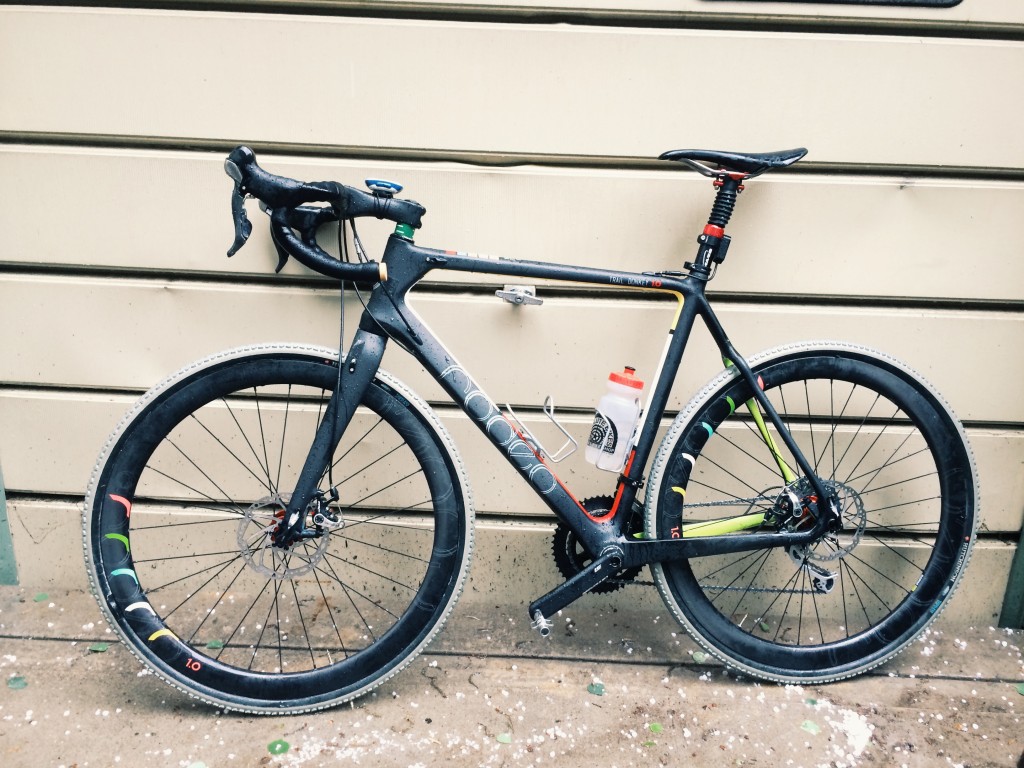
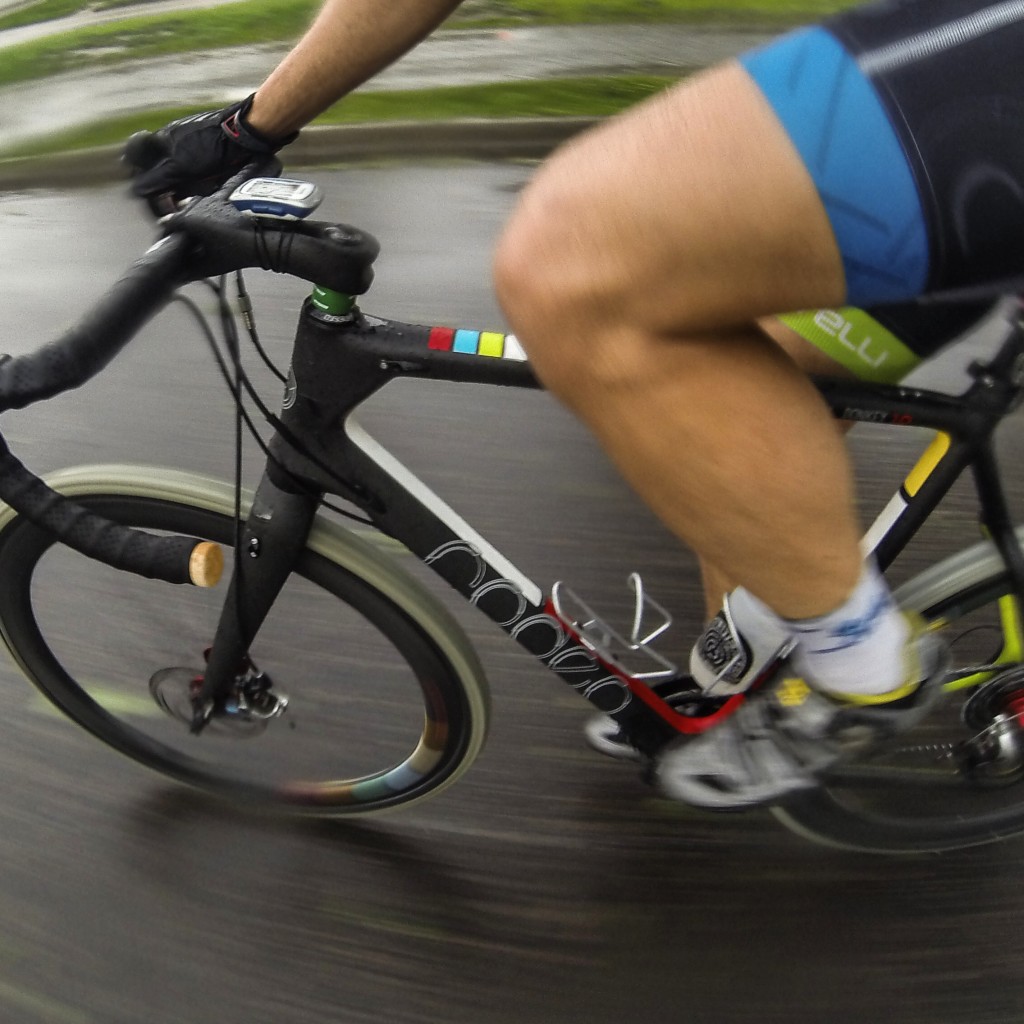
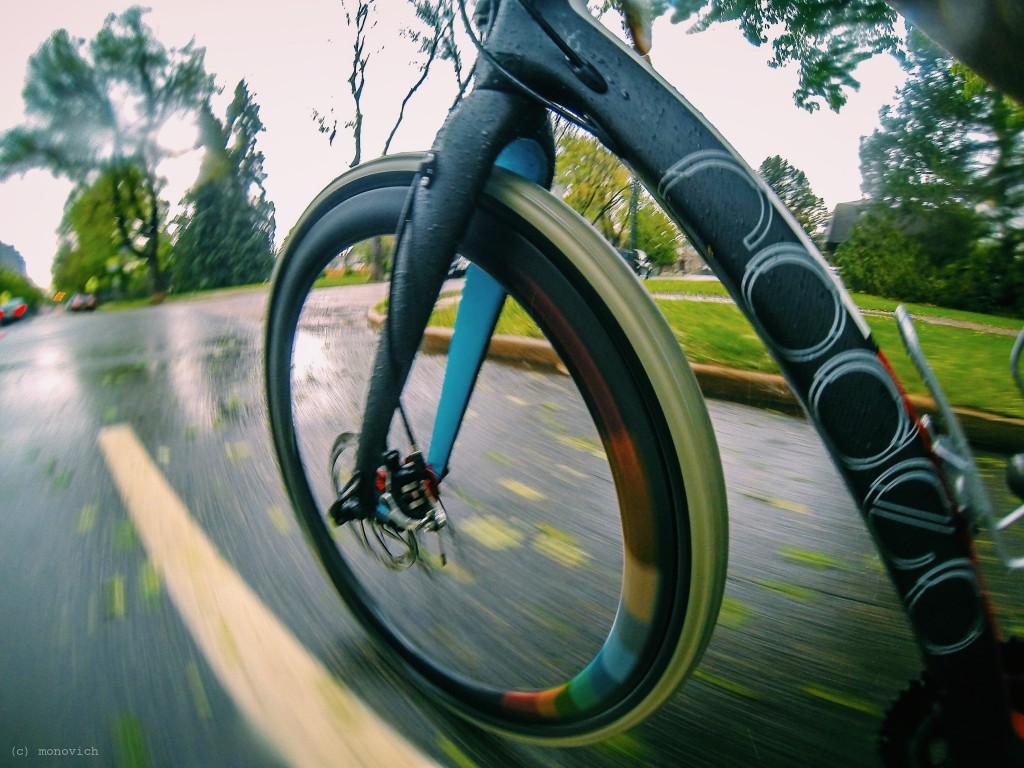
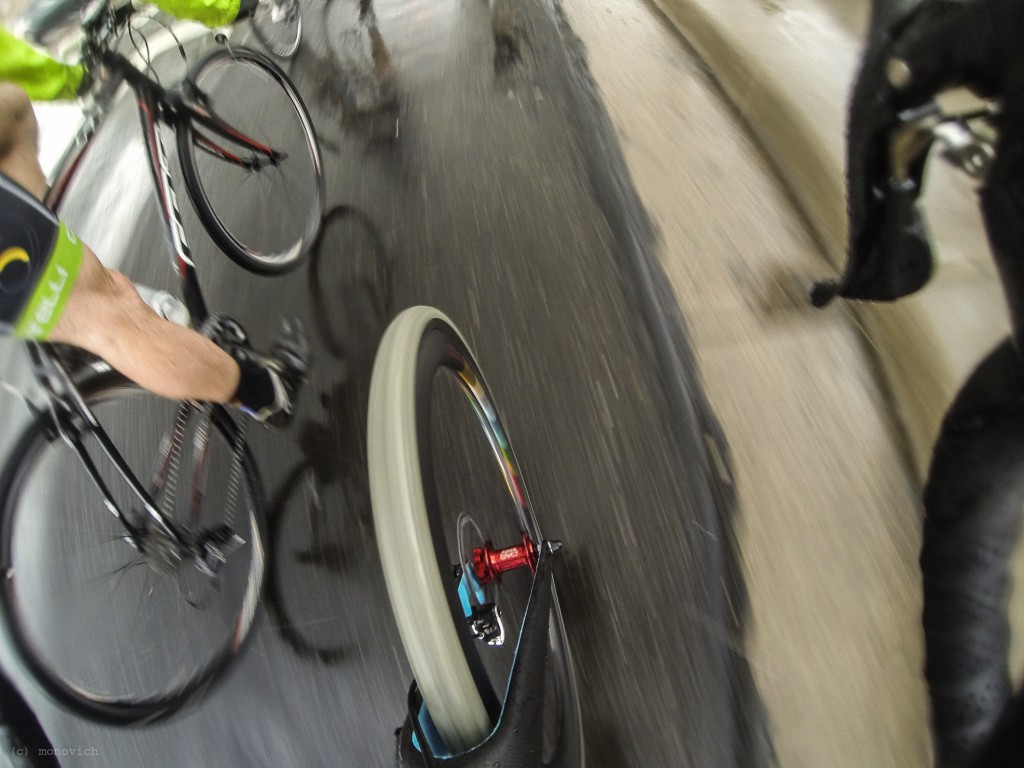
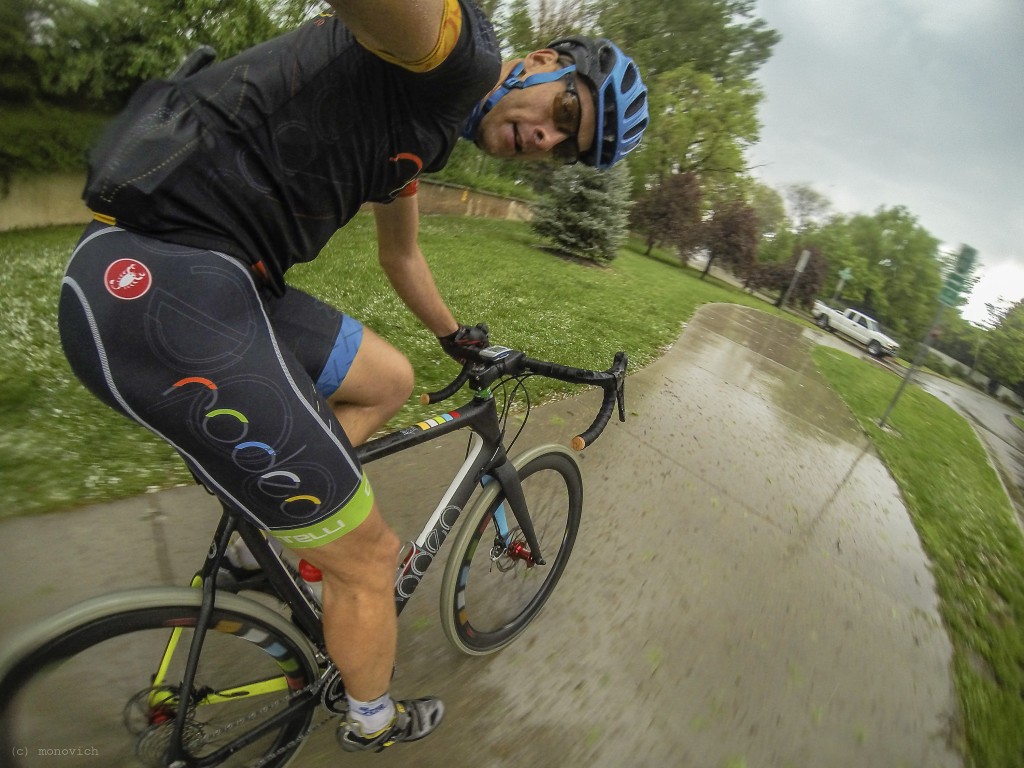
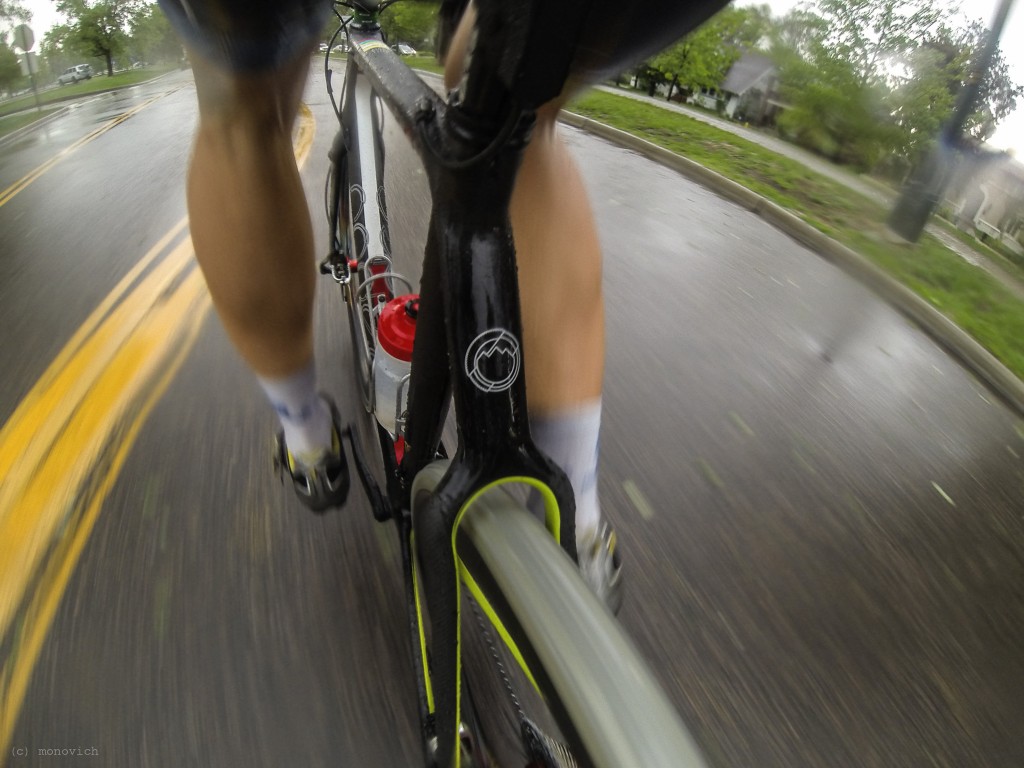
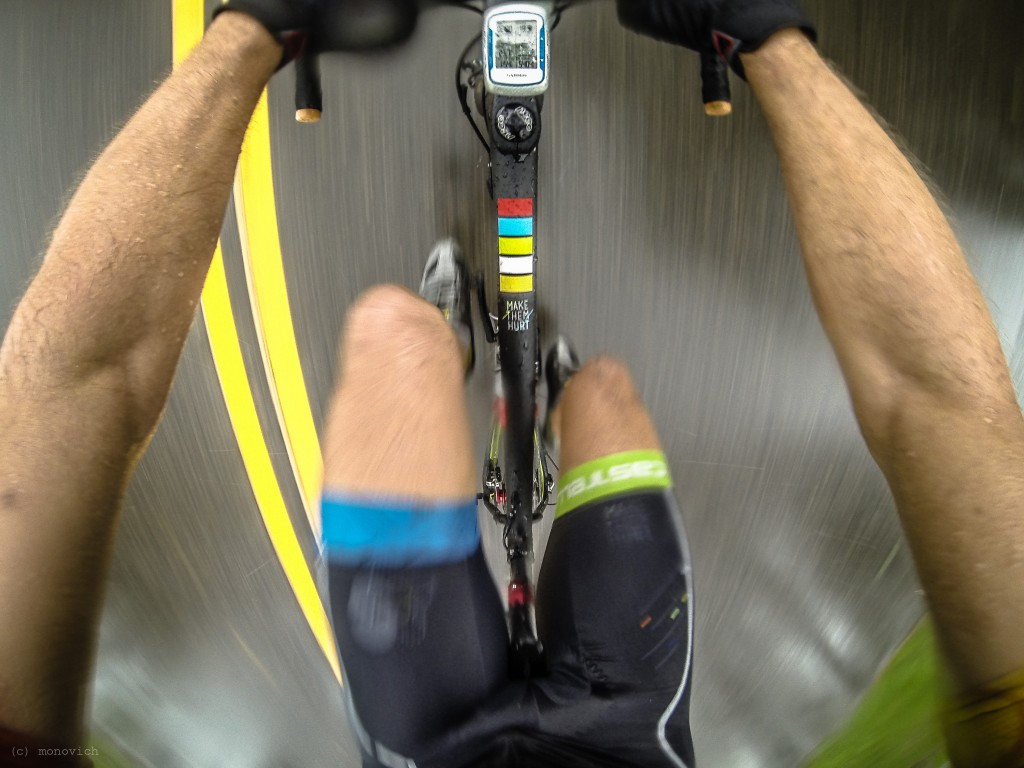
Donkey was properly baptized, but Donkey was made for dirt, so after adjusting and re-tensioning every single cable on the bike after the first ride, Chris and I hit the roads and trails on a much bigger ride, one more true to Traildonkey’s mission: Ride road, gravel, trail, and mountains, and do it well. We set off from central Denver, covered 15 miles on pavement, then hit the slopes of Green Mountain for first Donkey dirt.
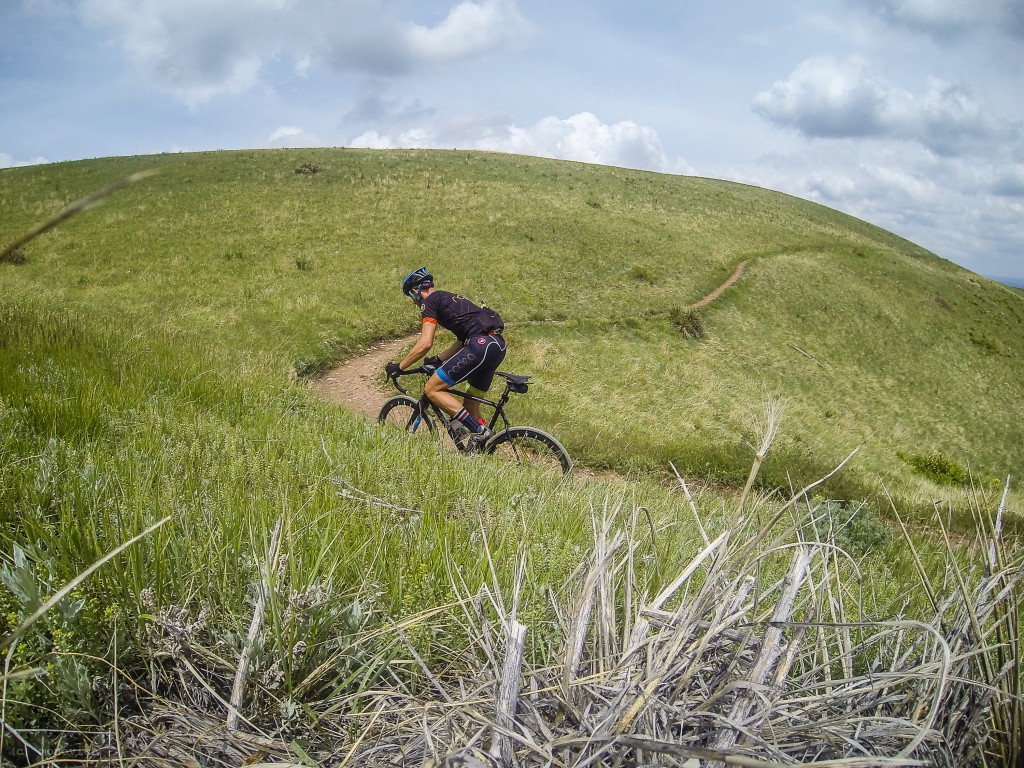
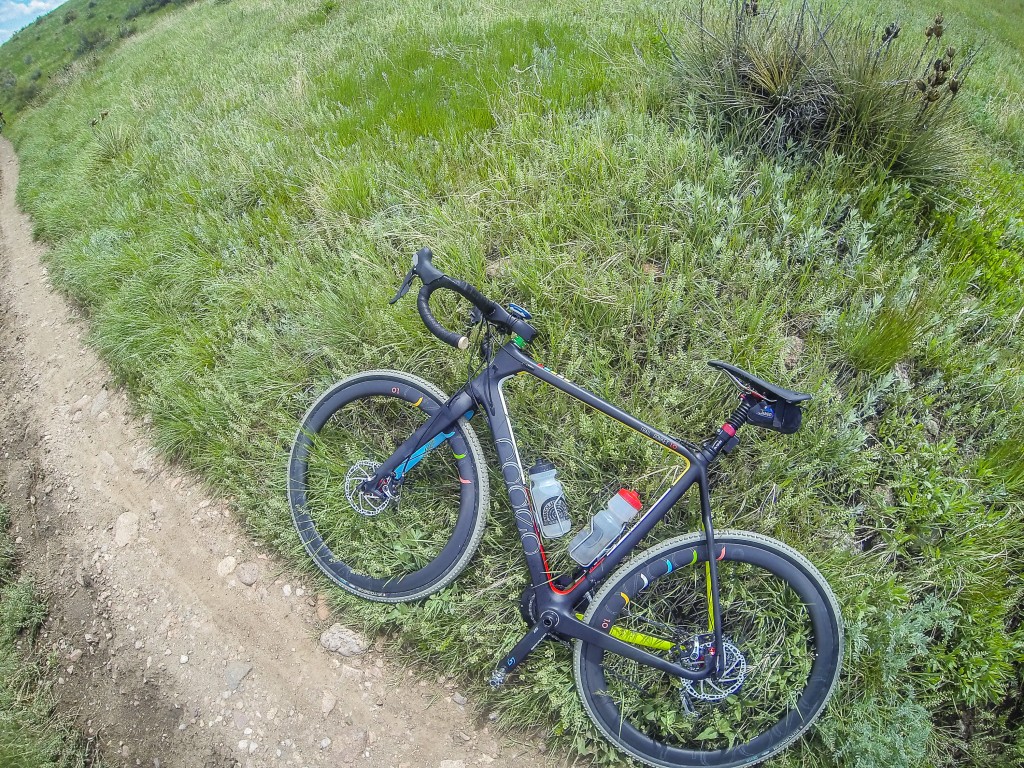
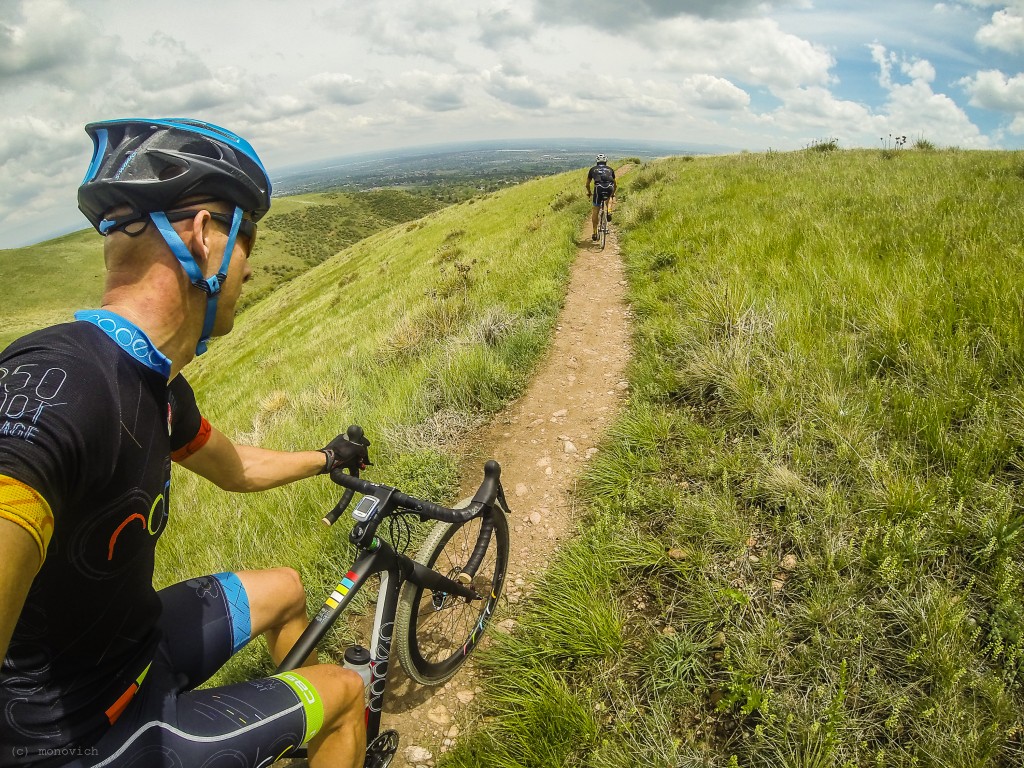
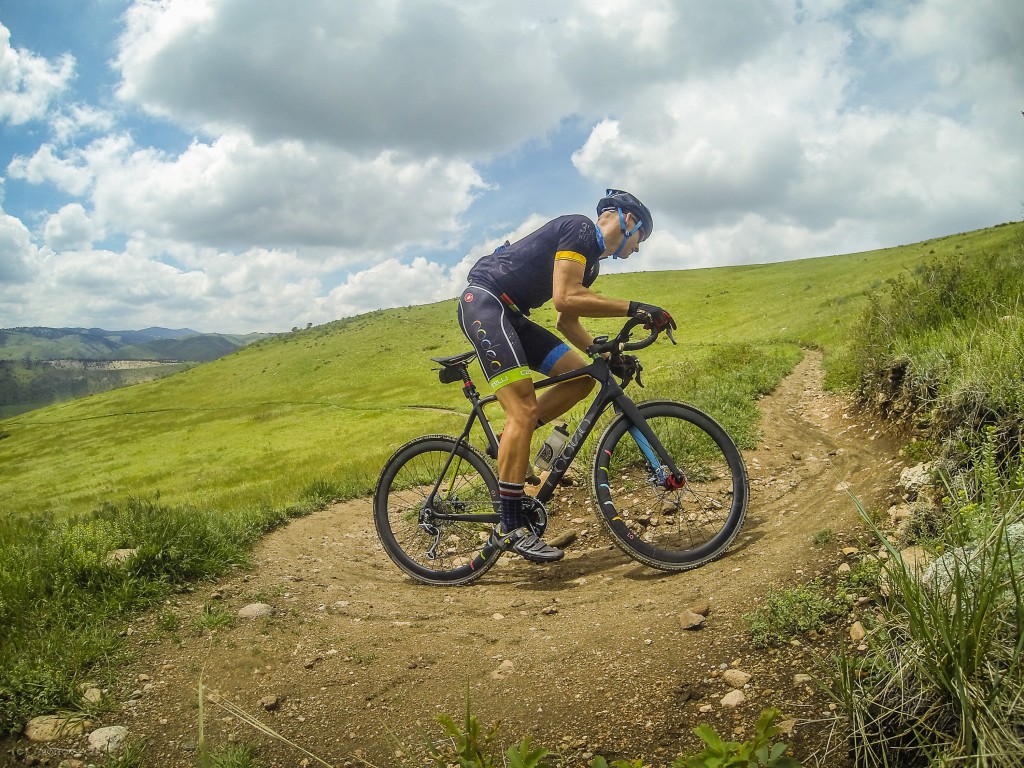
I learned a lot of things about Donkey in those first few miles on the dirt. The most important thing was: Double check your torque on your headset and stem bolts. On one particularly rocky descent down the backside of Green Mountain my bars slipped down in the stem AND twisted to the side at the steer tube. It was a good and scary reminder to check and re-check every nut and bolt. There is precious little suspension in this rig, afforded by the fairly skinny 34mm CX tires. The margin for error when trail riding a cyclocross bike is nowhere near that of a mountain bike. Every bump hits harder and every decision you make about which line to take is that much more important. Riding the Donkey reminds me of my earliest days mountain biking, when Rock Shox Mag 21s were just announced, and when you had to fight so much harder to wrangle a bike up or down the trail without dabbing. I’m a huge fan of the advances in MTB tech over the years, but sometimes I can’t help but think some of the simple magic of the sport is lost in the monstrous dual squish steeds often seen on the trails these days. I’m not an old school curmudgeon, pining for days gone by, but it does make me smile a bit to be reminded of those early days with my friends Drew, Jon, Chad, and my brothers, riding and re-riding the rutted, root filled trails of Oregon and Washington, trying to be the first to clean a given line. Good times, indeed.
Once we had cleared Green mountain, we re-entered the pavement, popped over Dinosaur Ridge, and made our way to Mount Falcon via Red Rocks. Mount Falcon is one of the most severe mountain bike climbs in the Denver Front Range, and it is indeed the place that truly birthed the Traidonkey idea. I had taken the Axis here a year prior and conquered the climb, but only just barely.
This time around I was on a vastly superior steed. What had been incredibly difficult to do on the Axis was much more manageable on the Donkey. The going was still tough, and not as comfortable as it would have been on a true MTB bike, but the challenge was immensely fun and satisfying, and Chris and I soldered up her slopes and rock gardens one more time.
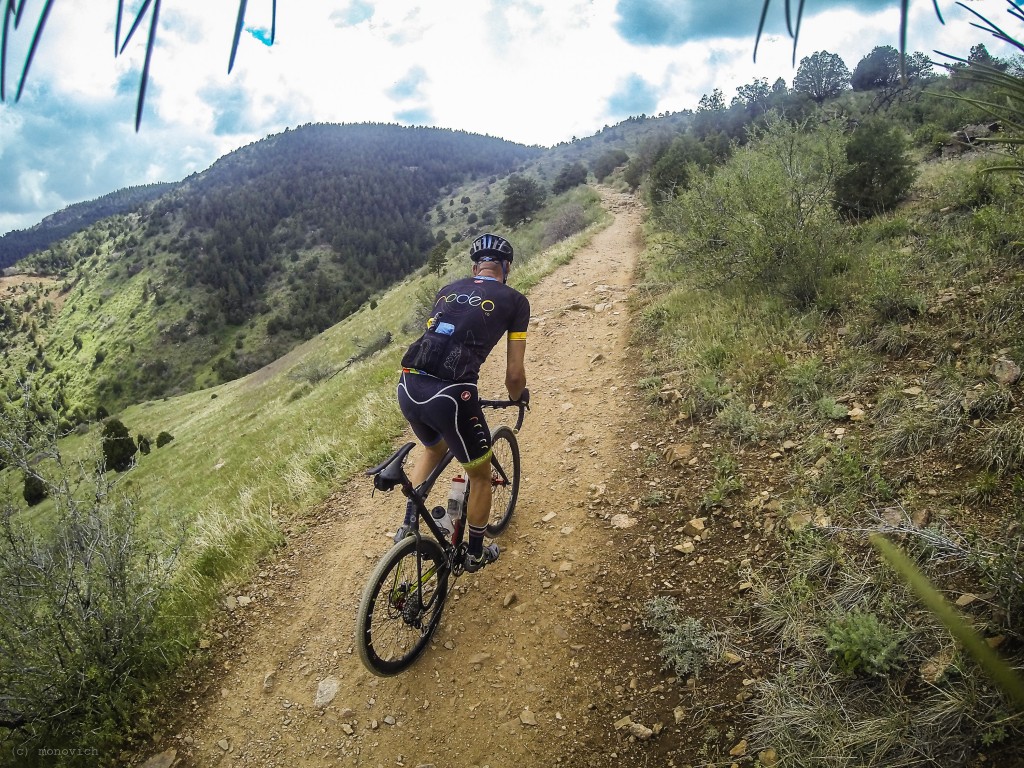
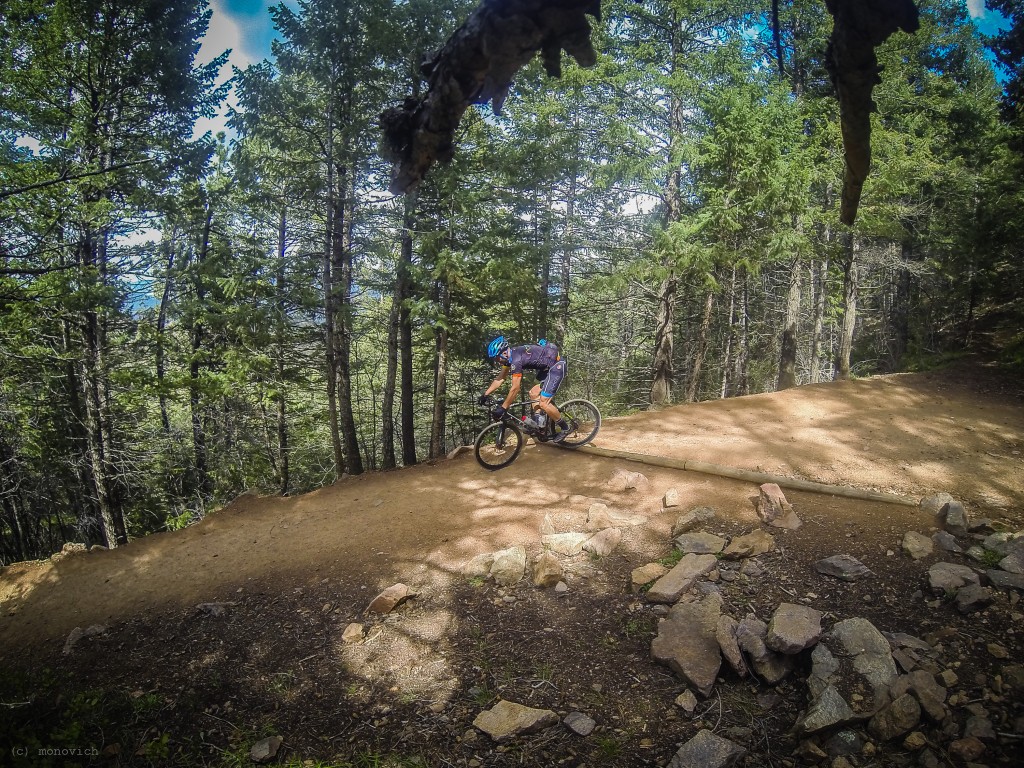
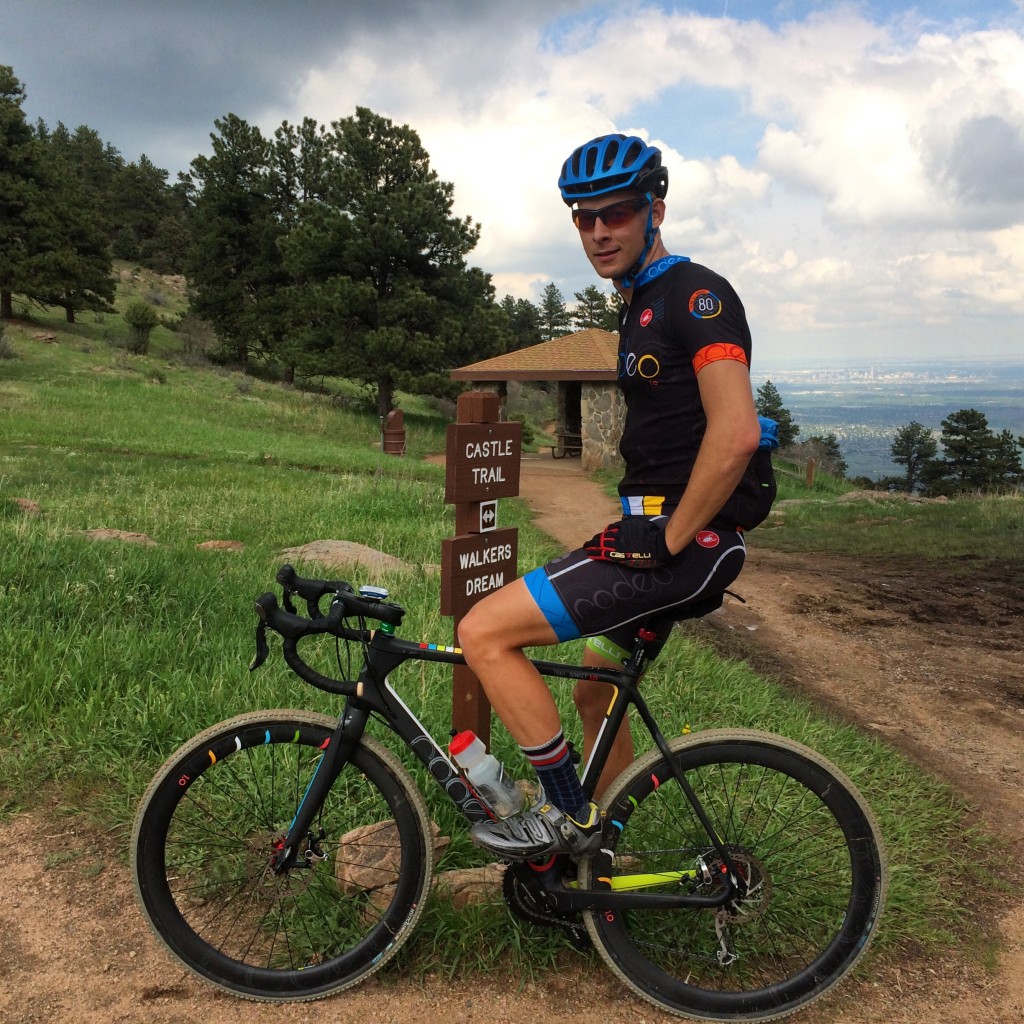
At the top we had the best part of the ride waiting for us. Unfortunately Chris had stretched or separated or broken his shoulder in a hockey accident and he hadn’t bothered to get it checked out yet, so he had to take the tarmac down while I descended Lair Of The Bear by myself. The 20-30 ish minutes that it took me to get down the trail to the highway were some of the most fun that I’ve had on a bike in years. Lair is a largely smooth trail with the occasional rocks, roots, whoops, ruts and pucker inducing features thrown in along the way. It was perfect Donkey testing terrain! Could this CX bike, which I had ridden out from central Denver, feel somewhat at home on this iconic Front Range descent? The answer I soon discovered, was an unequivocal “yes”. Here is a video of the first descent on the Donkey:
It was difficult to wipe the smile and small sense of triumph I felt when I got to the bottom of the mountain. I was exhausted and happy. Once again I discovered that the Donkey is not a mountain bike, and cannot be ridden in the same way that you would ride one. I had to descend a bit slower, be more careful with my lines, and absorb some skull cracking inputs when I failed to do either of the two.The impacts were useful though, and they served to test the strength of the platform and the wheels. I was very happy to disassemble the bike later and upon examination find no damage from the brutal blows that the bike had taken. Our choice to build the wheels 28/32 was probably a good one, and in retrospect may even end up being more strength than absolutely necessary, but a goal of this build has always been durability and utility before light weight. The dropper post played a crucial role in the descent, it took the feel of the bike on the descents from tall and tipsy to short and nimble. I was able to ride the majority of the toughest sections of the trail, including the pucker-inducing drop about halfway down that sometimes sees me getting off my MTB to walk.
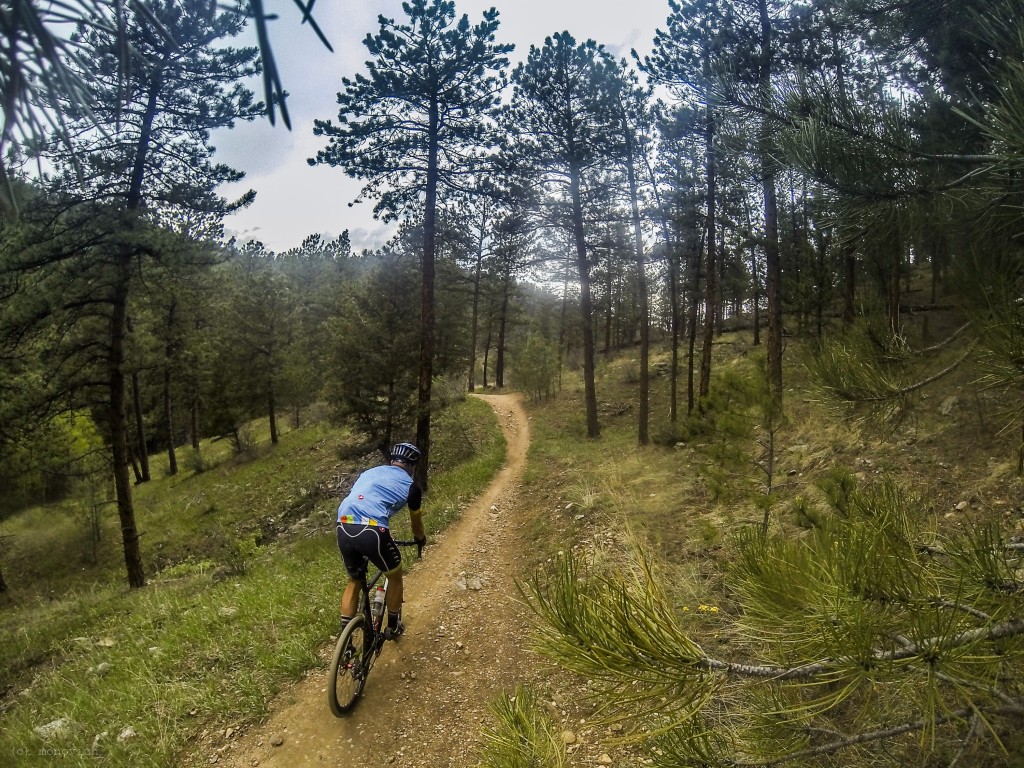
As a bonus, Chris’ road detour had him passing by our local burrito stop in Kittridge, and he had a feast waiting for me when I met back up with him.
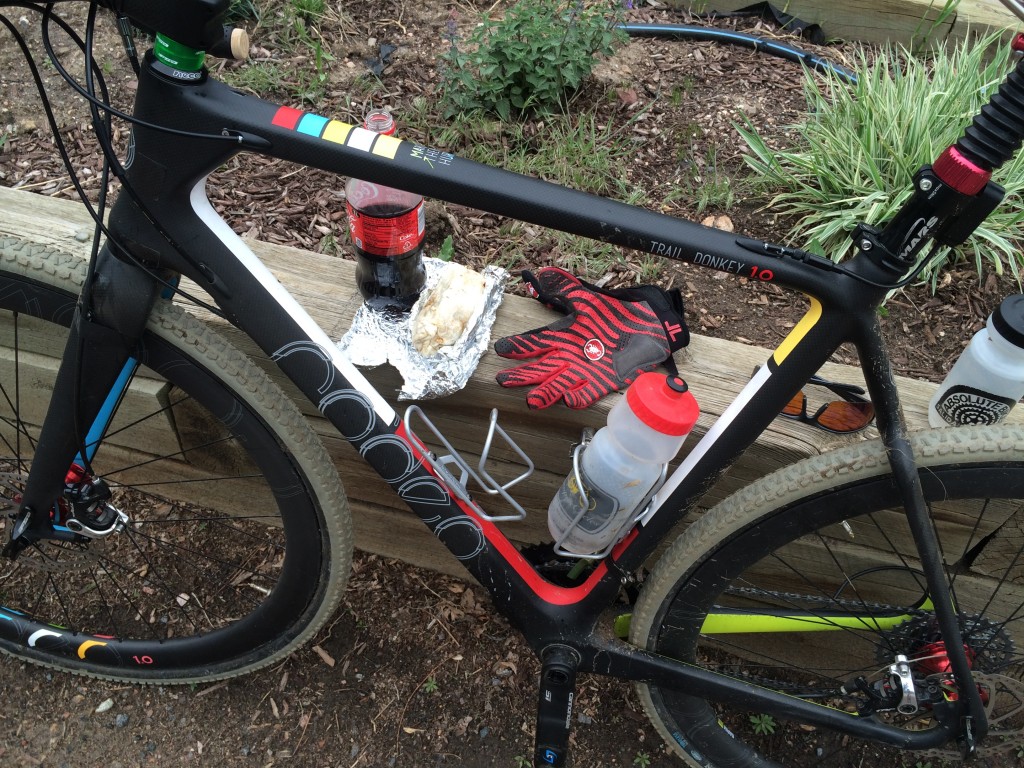
After the descent of Lair, we returned to Denver via roads and trails brimming with a sense of having done something just a little bit new. The Traildonkey’s maiden dirt voyage was a success and I was filled with a certain sense of contentment that comes from having an idea and seeing it through to completion. Rodeo is not a bike manufacturer, but somehow a bike exists that bears the Rodeo name, and could only bear the Rodeo name. Rodeo IS a laboratory. We didn’t put that in our name on day 1 because it sounded trendy, we did it because we knew we had ideas and we were going to get our hands dirty. Trail Donkey is a lab project. It’s fairly light, quite nimble, quite stiff, quite versatile, and didn’t cost a mint. It opens up the doors to routes I would never undertake on my other bikes, it rolls on hoops fit for a hippo, it sears retinas with it’s color scheme, it opens up new ways to reinterpret the sport. It adds a voice to the conversation and will no doubt be the steed on which many stories are birthed to share with the rest of the Rodeo crew.
Since this first voyage I’ve done many other excellent rides on this steed, and it has not let me down yet. I look forward to sharing those with everyone soon. Until then, I hope everyone who owns a cyclocross rig can take a fresh look at their own bike, lube it up, and take it on a fresh adventure. Any bike you take on roads and trails can be a Trail Donkey, and one cool result of this overall project would be to see people avoid stashing their very capable cx steeds in storage when racing season ends. Donkeys don’t hibernate. True story.
Pics and words by Stephen Fitzgerald.


3 Comments
Beautiful bike build, you have me jones in got build a CX-ish bike of my own now.
Wow, inspiring rig and concept, I woulndn’t have thought to make this transition without seeing your story. I have 3-4 bikes to do what the Trail Donkey does solo…road, hybrid, cx, 29er all specialists, not one generalist. Keep me posted if you should decide to do a production run on this frame and wheelset. Jeff from Ohio.
Hey Jeff. Thanks for the kind words. We ARE going into production on 2.0, and we are super stoked about it. Final details are being fiddled with now and we should have the molds cut in a couple of weeks. After that it’s some prototype riding then putting them out there on the open market for people to enjoy. Hard to even imagine how cool that day will be for us. We are working with great people to get this done. Engineers, industry experts and insiders, and cool brands like WTB who get what we are doing and have compatible products. If you want to be put on the Traildonkey-ONLY mailing list when we do announce updates, it’s right here. Just click the “want one?” tab fill out the simple form. https://www.rodeo-labs.com/the-laboratory/trail-donkey/
Cheers! – Stephen